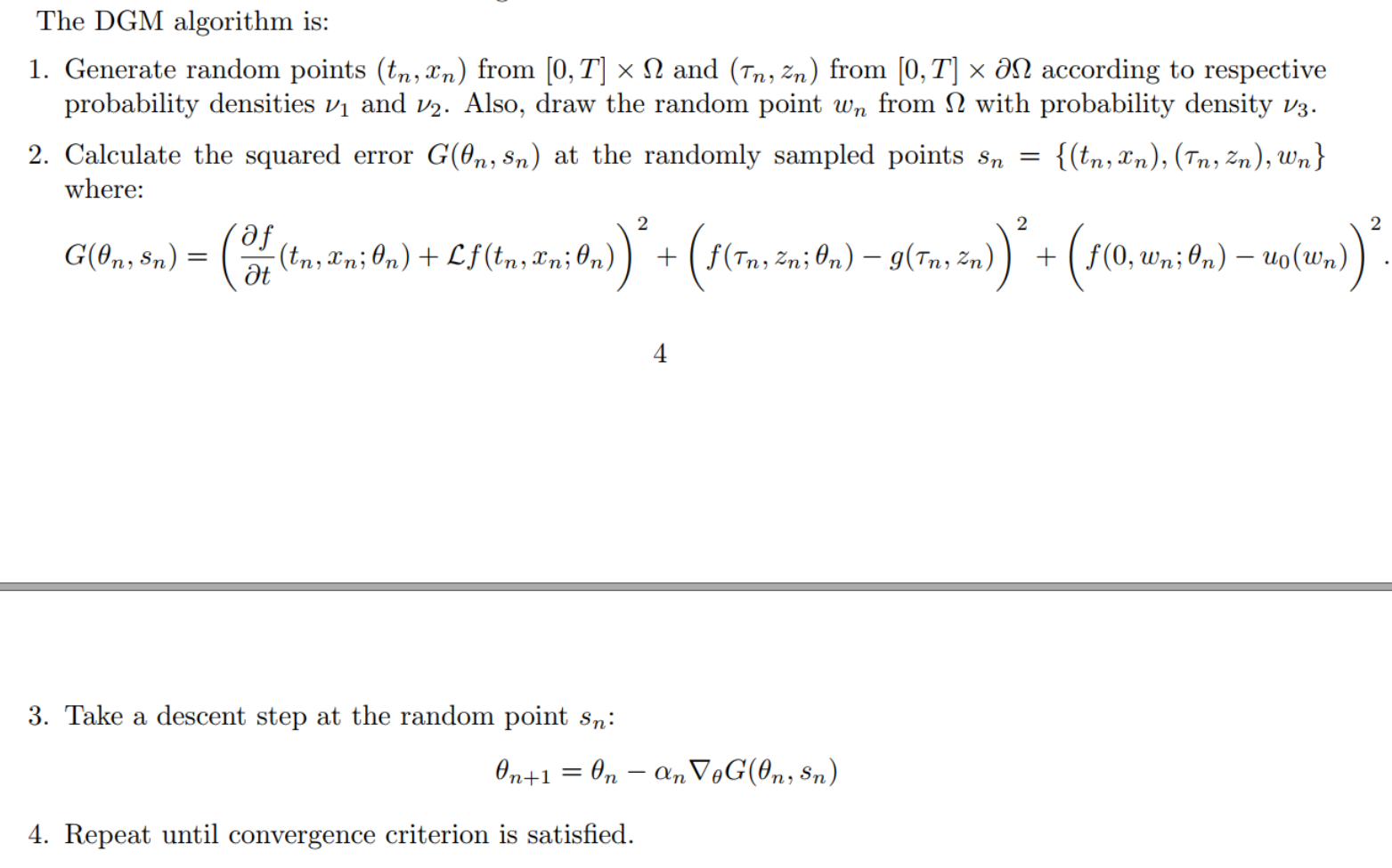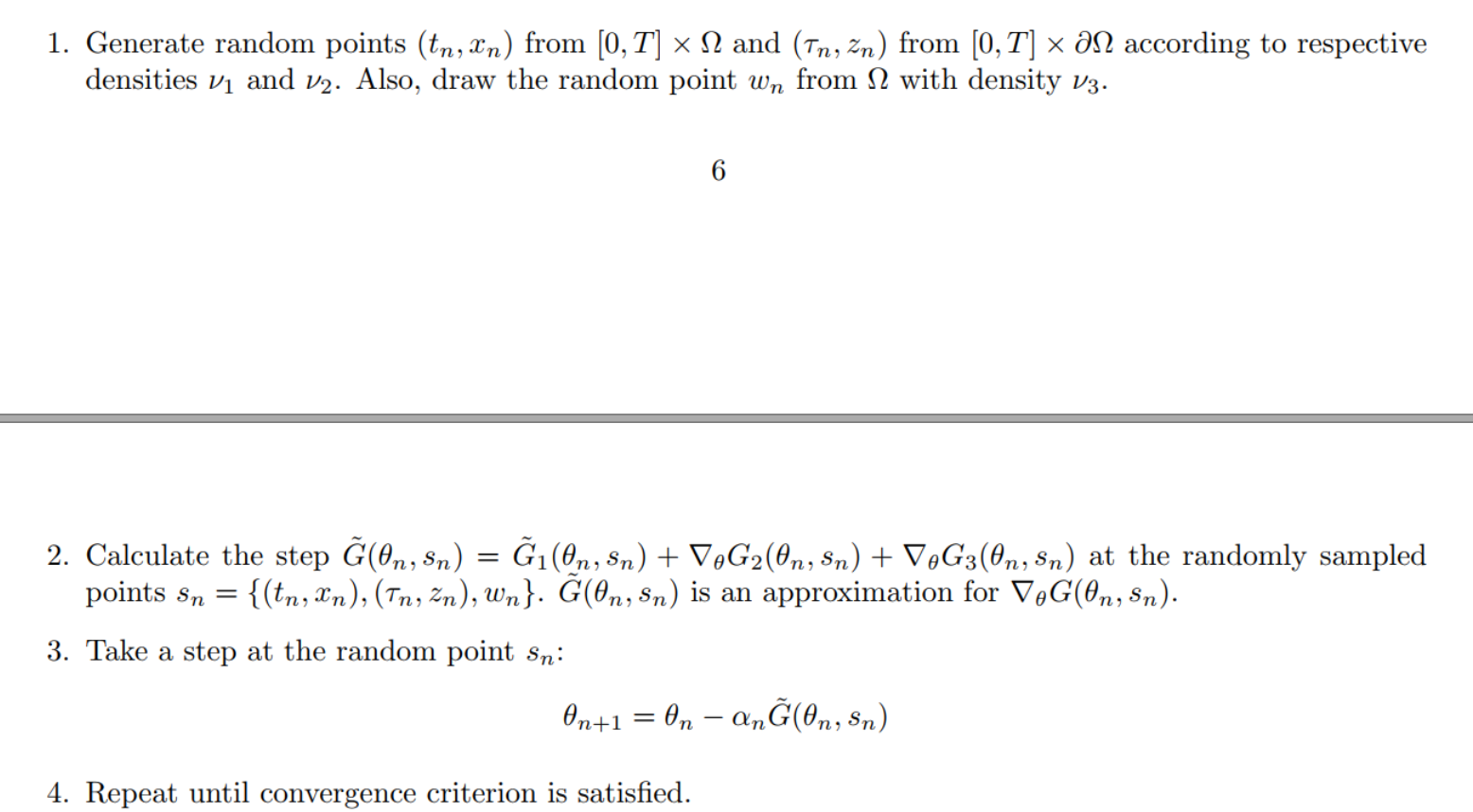论文信息
题目:DGM: A deep learning algorithm for solving partial differential equations
作者:Justin Sirignano? and Konstantinos Spiliopoulos
期刊、会议:
单位:
时间:18
代码:
基础
论文动机
- High-dimensional partial differential equations (PDEs) are used in physics, engineering, and finance. Their numerical solution has been a longstanding challenge
- This quickly becomes computationally intractable when the dimension d becomes even moderately large. We propose to solve high-dimensional PDEs
using a meshfree deep learning algorithm. - The method is similar in spirit to the Galerkin method, but with several key changes
using ideas from machine learning. - The Galerkin method is a widely-used computational method which seeks a reduced-form solution to a PDE as a linear combinationof basis functions.
- DGM is a natural
merger of Galerkin methods and machine learning
本文方法
Approximation Power of Neural Networks for PDEs
?tu(t,x)+Lu(t,x)=0,(t,x)∈[0,T]×Ωu(0,x)=u0(x),x∈Ωu(t,x)=g(t,x),x∈[0,T]×?Ω\begin{array}{ll} \partial_{t} u(t, x)+\mathcal{L} u(t, x)=0, & (t, x) \in[0, T] \times \Omega \\ u(0, x)=u_{0}(x), & x \in \Omega \\ u(t, x)=g(t, x), & x \in[0, T] \times \partial \Omega \end{array}?t?u(t,x)+Lu(t,x)=0,u(0,x)=u0?(x),u(t,x)=g(t,x),?(t,x)∈[0,T]×Ωx∈Ωx∈[0,T]×?Ω?
The error function:
J(f)=∥?tf+Lf∥2,[0,T]×Ω2+∥f?g∥2,[0,T]×?Ω2+∥f(0,?)?u0∥2,Ω2J(f)=\left\|\partial_{t} f+\mathcal{L} f\right\|_{2,[0, T] \times \Omega}^{2}+\|f-g\|_{2,[0, T] \times \partial \Omega}^{2}+\left\|f(0, \cdot)-u_{0}\right\|_{2, \Omega}^{2}J(f)=∥?t?f+Lf∥2,[0,T]×Ω2?+∥f?g∥2,[0,T]×?Ω2?+∥f(0,?)?u0?∥2,Ω2?
This paper explores several new innovations:
- First, we focus on
high-dimensional PDEs and apply deep learning advances of the past decade to this problem. - Secondly, to avoid ever forming a mesh, we
sample a sequence of random spatial points. - Thirdly, the algorithm incorporates
a new computational scheme for the efficient computationof neural network gradients arising from thesecond derivativesof high-dimensional PDEs.
DGM

A Monte Carlo Method for Fast Computation of Second Derivatives
- The computational cost for calculating second derivatives

The modified algorithm here is computationally less expensive than the original algorithm
Relevant literature
- Recently, Raissi [41, 42] develop physics informed deep learning models. They estimate deep neural network models which
merge data observations with PDE models. This allows for the estimation of physical models from limited data by leveraging a priori knowledge that the physical dynamics should obey a class of PDEs. Their approach solves PDEsin one and two spatial dimensions using deep neural networks.
[33] developed an algorithm for the solution of a discrete-time version of a class of free boundary PDEs. - Their algorithm, commonly called the Longstaff-Schwartz method", uses dynamic programming and approximates the solution
using a separate function approximator at each discrete time(typically a linear combination of basis functions).Our algorithm directly solves the PDE, and uses a single function approximator for all space and all time.